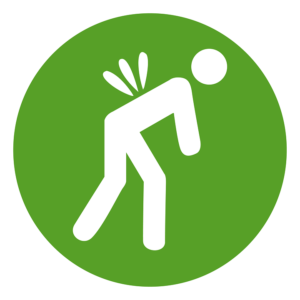Can a vitamin C deficiency increase your back pain?

Low back pain is very common and difficult to treat. Using many different treatment option increases chances of success. Vitamin C is essential for collagen strength. Collagen health is key in ligament, tendon and bone quality.
Recent studies show many people are vitamin C deficient. This study had 4742 individuals over the age of 20. Low serum vitamin C levels were associated with increased neck, low back and knee pain. This study suggests more studies are warranted to determine the importance of vitamin C in the treatment of chronic low back pain and what doses would be appropriate.
The Research
Pain. 2016 Nov;157(11):2527-2535.
Serum vitamin C and spinal pain: a nationwide study.
Dionne CE1, Laurin D, Desrosiers T, Abdous B, Le Sage N, Frenette J, Mondor M, Pelletier S.
- 1aCentre de recherche du CHU de Québec-Université Laval, Quebec City, QC, Canada bQuebec Centre of Excellence on Aging (CEVQ), Centre de recherche du CHU de Québec-Université Laval, Quebec City, QC, Canada cDepartment of Rehabilitation, Faculty of Medicine, Université Laval, Quebec City, QC, Canada dFaculty of Pharmacy, Université Laval, Quebec City, QC, Canada eSchool of Nutrition, Université Laval, Quebec City, QC, Canada fDepartment of Social and Preventive Medicine, Faculty of Medicine, Université Laval, Quebec City, QC, Canada gEmergency Department, CHU de Québec-Université Laval, Quebec City, QC, Canada hDepartment of Family Medicine and Emergency Medicine, Faculty of Medicine, Université Laval, Quebec City, QC, Canada.
Abstract
Back pain brings about one of the heaviest burden of disease. Despite much research, this condition remains poorly understood, and effective treatments are frustratingly elusive. Thus, researchers in the field need to consider new hypotheses. Vitamin C (ascorbic acid) is an essential cofactor for collagen crosslinks, a key determinant of ligament, tendon, and bone quality. Recent studies have reported high frequency of hypovitaminosis C in the general population. We hypothesized that lack of vitamin C contributes to poor collagen properties and back pain. We conducted this study to examine the associations between serum concentration of vitamin C and the prevalence of spinal pain and related functional limitations in the adult general population. This study used nationwide cross-sectional data from the U.S. National Health and Nutrition Examination Survey (NHANES) 2003-2004. Data were available for 4742 individuals aged ≥20 years. Suboptimal serum vitamin C concentrations were associated with the prevalence of neck pain (adjusted odds ratio [aOR]: 1.5; 95% confidence interval [CI]: 1.2-2.0), low back pain (aOR: 1.3; 95% CI: 1.0-1.6), and low back pain with pain below knee (aOR: 1.3; 95% CI: 1.0-1.9) in the past 3 months, self-reported diagnosis of arthritis/rheumatism (aOR: 1.4; 95% CI: 1.2-1.7), and related functional limitations’ score (adjusted difference of means [aB]: 0.03; 95% CI: 0.00-0.05). The prevalence of hypovitaminosis C in the general population is high. Our study shows associations between vitamin C and spinal pain that warrant further investigation to determine the possible importance of vitamin C in the treatment of back pain patients.











